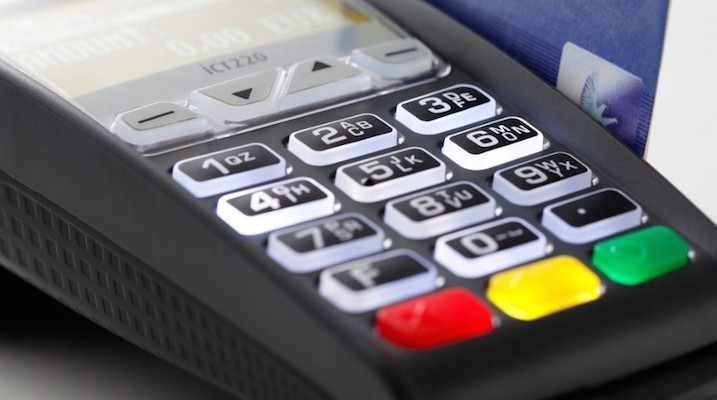A recent directive on geotagging for PoS machines has stirred conversations, among payments system operators and consumers of financial products.
The Central Bank of Nigeria (CBN) recently issued a directive to all commercial banks, microfinance banks, mobile money operators, and other licensed participants in the Nigerian payments ecosystem, mandating full migration to the ISO 20022 standard for payment messaging by October 31, 2025.
In addition, all payment terminals must include mandatory geo-tagging to enhance data accuracy and transaction transparency across the financial system. The directive aligns with global SWIFT standards and supports Nigeria’s push for a more standardised and secure payment infrastructure.
The move is not designed to affect legitimate PoS operators.
It is mainly targeted at curbing fraudulent practices, especially those linked to kidnappers, scammers, and other criminal networks who use PoS terminals to move illicit funds.
What exactly is Geotagging?
Geotagging is the process of adding geographical identification metadata, essentially the exact location data to various items. This can be applied to things like photos, videos, websites, social media posts, and more.
Geotagging helps pinpoint the exact location where a person is or where any media content or business transaction is being uploaded or carried out.
It also means placing a Point of Sale (PoS) terminal at a specific location on the map, identifying the exact spot using longitude and latitude. With these coordinates, one can accurately locate where the PoS is situated.
For PoS providers like MoniePoint or Opay, this means they can instantly know the precise spot where a transaction takes place.
If a crime is reported, investigators can trace the location without delay.
Obioha Oti, acting National President of the Association of Mobile Money and Bank Agents, said that “Geotagging must work hand-in-hand with geofencing,” which means that no PoS terminal should operate outside a 10-meter radius of its registered location and address.
How Will Geotagging Affect PoS Operators and Users?
PoS must now remain within a set distance (about 10 meters) from the address you registered as your business location.
Oti spoke on Channels TV during its Business Morning show, saying that the development wasn’t surprising since it had been under discussion.
He explained that for PoS owners, once they move their device away from the registered location, it will be deactivated.
“About 10 meters away from that location, the device will be shut down and won’t work until it returns within that area,” he said.
“For example, if I register a PoS in Lekki and take it elsewhere, as soon as I move away from the geotagged location, it will stop working,” he added.
How Do They Plan to Tag All PoS Devices in Nigeria Within 60 Days?
Oti noted that while the directive is a good one, the real challenge lies in how to tag the millions of PoS devices across the country.
He explained that in reality, some PoS machines are not Android-based and therefore not compatible with the geotagging and geofencing technology.
“We have about 10 million PoS devices in the country, with around half of them active. Whether they are currently active or will be later, they all need to be geotagged to comply with the Central Bank of Nigeria’s (CBN) directive,” he said.
He emphasised that operators will struggle to geotag over 4 million devices in such a short time.
“To issue a directive that this geotagging must be done within 60 days is where the problem lies. We just came out of the naira redesign issue that caused a lot of confusion.”
“Agency banking started in 2013. It hasn’t been that long, but geotagging was not part of the process then, so I don’t see why there’s a rush now. The CBN’s policy is good, but they should provide a timeline that won’t cause unnecessary disruption in the market,” he added.
What Are the Technical Challenges and Business Impact?
The head of the Mobile Money and Bank Agents said not all PoS machines are capable of geotagging. He explained that only devices running on Android version 10 and above can support it.
“At least 40 percent of the PoS devices in the market are not Android-based. This means a large number will need to be withdrawn and replaced with new, compliant versions, which will require significant resources,” Oti said.
He added that Moniepoint and Opay have the highest number of PoS terminals in the market. These providers will either need to withdraw non-compliant devices or update the software on those that meet the minimum Android version requirement.
Oti appealed to the government to intervene and allow PoS operators to carry out the upgrade and geotagging in phases, since it will take time, effort, and may present several challenges. He stressed that during the upgrade process, the devices will have to be switched off, which could affect business operations.
In his article titled “Courage, CBN, Courage,” Sanusi Lamido Sanusi, former CBN governor, urged the current administration to act with courage in implementing the directive.
“When we started cashless Nigeria with cashless Lagos and set deadlines everything I was told was that the CBN was embarking on an impossible journey because we had neither the infrastructure nor the personnel to do it,” he noted.
He said, “We must always face the tough tasks and break down the opposition and confront powerful opponents. The easy things have all been done BECAUSE they were easy. To really make a change we must face challenges and difficulties and opposition and ensure we ultimately conquer.”









